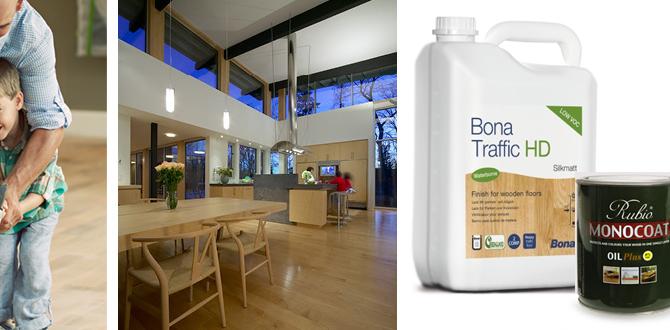Battery vs. Pneumatic Nailers: The ultimate guide to choosing the right tool for your DIY projects. This comparison highlights the key advantages and disadvantages of each type, helping you make an informed decision for better results and an easier build.
Hey there, fellow DIYers! Jack Shaffer from Nailerguy here. Staring down a woodworking project and wondering which nailer to grab? It’s a question that pops up a lot, and for good reason. Choosing between a battery-powered nailer and the classic pneumatic kind can feel like a big decision. Get it wrong, and your project might work, but it won’t be as smooth as it could be. We’re here to break it all down. No confusing jargon, just clear-cut facts to help you pick the perfect nailer. We’ll look at the pros and cons of each, so you can feel confident and ready to tackle your next build!
Table of Contents
Battery vs. Pneumatic Nailer: Understanding Your Options
When you’re heading to the hardware store or browsing online for a nail gun, you’ll primarily see two main types: battery-powered (cordless) and pneumatic (air-powered). Both have their fans and their drawbacks, and knowing what they are is key to picking the right one for your specific needs. Think of it like choosing the right tool for a specific job – a screwdriver isn’t always the best for tightening a bolt, and the same applies here. Let’s dive into what makes each unique.
Battery-Powered Nailers: Freedom and Portability
Battery-powered nailers, also known as cordless nailers, are the modern marvels in the nail gun world. They run on rechargeable lithium-ion batteries, just like many of your other cordless tools. This independence from air compressors and hoses is their biggest selling point.
Pros of Battery-Powered Nailers:
- Unmatched Portability: No cords, no hoses! This means you can easily move around the job site, climb ladders, or work in tight spaces without being tethered to an air compressor. It’s pure freedom.
- Quick Setup: Just pick it up, load a battery, and you’re ready to go. There’s no need to unroll air hoses, connect them, or worry about kinks.
- User-Friendly: They are generally very easy to operate right out of the box. Load the nails, insert the battery, and you’re firing away.
- Reduced Clutter: Less equipment means less mess and fewer tripping hazards on your workspace.
- Consistent Power: Modern battery technology provides consistent power delivery, so you don’t usually see a dip in performance as you nail.
- Ideal for Small to Medium Projects: For trim work, crown molding, picture frames, or quick repairs, they are incredibly convenient.
Cons of Battery-Powered Nailers:
- Higher Initial Cost: Battery nailers often come with a higher upfront price tag, especially when you factor in the cost of extra batteries.
- Weight: The battery adds extra weight, which can lead to fatigue during long work sessions.
- Power Limitations: While they’ve improved significantly, some very heavy-duty nailing tasks (like framing with large nails) might still be better suited for pneumatic tools.
- Battery Dependence: If your battery runs out of charge, you’re out of commission until it’s recharged or you swap it out.
- Maintenance: While generally robust, battery cells can degrade over time and eventually need replacement, adding to long-term cost.
Pneumatic Nailers: Power and Endurance
Pneumatic nailers have been the workhorses of the construction and woodworking industries for decades. They rely on compressed air, supplied by an air compressor, to drive the nail. This power source gives them a distinct advantage in certain applications.
Pros of Pneumatic Nailers:
- Superior Power: They deliver exceptional power, making them ideal for driving larger nails, working with dense hardwoods, or handling demanding tasks like framing and roofing.
- Lighter Tool Weight: Since the compressor and hoses are separate, the nailer itself is often lighter and more compact, reducing fatigue during extended use.
- Faster Firing Speed: Pneumatic nailers typically offer a higher nail firing rate, which can speed up productivity significantly for high-volume work.
- Lower Tool Cost: The nailer itself is usually less expensive than its battery-powered counterpart.
- No Battery Worries: As long as your compressor is running, you have an unlimited supply of “power.” No need to wait for batteries to charge.
- Durability: Known for their robust construction and longevity, pneumatic tools can often last for many years with proper maintenance.
Cons of Pneumatic Nailers:
- Requires an Air Compressor: This is the biggest drawback. You need a compressor, which is an additional purchase, takes up space, and requires maintenance.
- Hose Management: You’ll deal with air hoses that can get tangled, kinked, and restrict your movement around the job site.
- Noise: Air compressors can be quite noisy, potentially requiring hearing protection.
- Setup Time: It takes more time to set up: connect the hose, ensure proper air pressure, and manage the hose as you work.
- Less Portable: Moving the entire setup (compressor, hose, and nailer) can be cumbersome, especially for small jobs or working in remote areas.
- Air Leaks: Hoses and fittings can develop leaks, affecting performance and wasting air.
Key Differences: A Side-by-Side Comparison
To make it even clearer, let’s put the main differences side-by-side. This will help you visualize exactly where each type shines.
| Feature | Battery-Powered Nailer | Pneumatic Nailer |
|---|---|---|
| Power Source | Rechargeable Lithium-ion Battery | Compressed Air from an Air Compressor |
| Portability | Excellent – Hose and cord-free | Limited – Requires compressor and hose |
| Setup Time | Very Fast – Load battery and nails | Slower – Connect hose, check pressure |
| Initial Cost | Higher (nailer + batteries) | Lower (tool itself, but compressor is extra) |
| Tool Weight | Heavier (due to battery) | Lighter (nailer only) |
| Nail Driving Power | Good to Very Good (improving rapidly) | Excellent – Ideal for dense materials and large nails |
| Firing Speed | Good | Excellent – Faster for high-volume work |
| Ideal Use Cases | Trim, molding, crafts, DIY, small repairs | Framing, roofing, decks, heavy construction, workshops |
| Maintenance | Battery care, occasional cleaning | Compressor maintenance, hose/fitting checks, tool lubrication |
Which Nailer is Right for Your Project?
Now that we’ve laid out the pros and cons, let’s get practical. The best nailer for you depends entirely on what you plan to do with it. Consider these scenarios:
For the Weekend DIYer and Homeowner:
If you’re tackling projects around the house like installing baseboards, putting up crown molding, building a bookshelf, or making simple repairs, a battery-powered nailer is likely your best bet. The convenience of not dealing with an air compressor and hose is a massive advantage. Setting up for a quick trim job takes minutes, not half an hour. Plus, the portability means you can easily work in various rooms without dragging heavy equipment. Many battery nailers are excellent for finishing nails and brad nails, which are perfect for these types of projects.
For the Serious Woodworker or Contractor:
If you’re building decks, framing houses, working with exotic hardwoods, or need maximum speed and power for continuous work, a pneumatic nailer is often the preferred choice. The raw power of compressed air can drive larger nails effortlessly, and the sustained firing speed is crucial for jobs where thousands of nails are used. While the initial setup is more involved, the reliability and power can’t be beaten for heavy-duty applications. For these users working in a dedicated shop space, the compressor is usually a standard piece of equipment.
For the Hobbyist on a Budget:
This can be a tougher call. A basic compressor and a pneumatic finish nailer might be cheaper initially than a high-end battery nailer. However, remember to factor in the cost of hoses, fittings, and potentially a smaller framing nailer if needed. If your hobby involves finer woodworking and smaller projects, a battery-powered nailer’s convenience might outweigh the cost, especially if you can find one on sale or buy into a battery platform you already own.
Essential Features to Consider
Regardless of which type you lean towards, here are some features that are important for any nailer:
- Nail Size Compatibility: Make sure the nailer can handle the sizes and types of nails you’ll be using most often (e.g., brad nails, finish nails, framing nails).
- Depth Adjustment: This lets you control how deep the nail is driven into the material. Crucial for getting a flush finish or sinking nails below the surface for filling.
- Dry-Fire Lockout: This feature prevents the nailer from firing when it’s out of nails, which saves wear and tear on the tool and prevents accidental damage to your work surface.
- Sequential vs. Contact Actuation: Sequential (or “touch-and-release”) fires one nail when you pull the trigger and depress the nose. Contact (“slam-fire”) fires nails as fast as you can bump the nose. Sequential is generally safer and more precise, while contact is faster. Many tools offer selectable modes.
- Rafter Hook: A small but incredibly useful feature for hanging the nailer on your tool belt or a rafter while not in use.
Safety First: Always Be Prepared
No matter which nailer you choose, safety is paramount. Both types can cause serious injury if not used correctly. Always follow these essential safety tips:
- Wear Safety Glasses: This is non-negotiable. Always wear ANSI Z87.1 compliant safety glasses to protect your eyes from flying debris or ricocheting nails.
- Never Point the Nailer at Yourself or Others: Treat every nailer like a loaded firearm. Keep the nose pointed away from people or yourself at all times.
- Keep Fingers Off the Trigger: Your finger should only be on the trigger when you intend to fire a nail.
- Engage Dry-Fire Lockout: If your tool has this feature, use it to prevent accidental firing.
- Be Aware of Your Surroundings: Ensure no one is behind your work piece when you fire, as nails can pass through thin materials. For pneumatic tools, check that your air hose is securely connected and not creating a tripping hazard.
- Read the Manual: Every tool is different. Take the time to read and understand the manufacturer’s instructions for safe operation and maintenance. For more information on tool safety, the Occupational Safety and Health Administration (OSHA) provides valuable resources for safe tool usage in various industries.
Maintenance Tips for Longevity
To ensure your nailer performs well for years to come, a little maintenance goes a long way.
For Battery-Powered Nailers:
- Battery Care: Store batteries in a moderate temperature environment. Avoid extreme heat or cold. Don’t leave them fully discharged for extended periods.
- Keep it Clean: Wipe down the exterior regularly. Remove sawdust and debris from around the magazine and any vents.
- Magazine Maintenance: Occasionally, you might need to clean the nail magazine to ensure smooth nail feeding.
- Follow Manufacturer’s Lubrication Schedule: Some battery nailers require occasional lubrication of specific parts as per the manual.
For Pneumatic Nailers (and Compressors):
- Drain the Compressor Tank: Regularly drain any moisture from the air compressor tank. This prevents rust build-up inside the tank and keeps your air supply clean.
- Lubricate the Tool: Most pneumatic nailers require a few drops of specialized pneumatic tool oil in the air inlet before each use. Check your manual for specifics.
- Check Hoses and Fittings: Inspect air hoses and connections for leaks or damage. A leaky hose wastes air and reduces tool performance.
- Clean the Air Filter: The air compressor has an intake filter that needs to be cleaned or replaced periodically to ensure the compressor draws clean air.
- Tool Cleaning: Like battery models, keep the exterior of the nailer clean.
Frequently Asked Questions (FAQ)
What is the main advantage of a battery-powered nailer?
The biggest advantage is their incredible portability. You don’t need an air compressor or hoses, making them super easy to set up and move around any job site.
When is a pneumatic nailer a better choice?
Pneumatic nailers are generally better for heavy-duty tasks like framing, roofing, or working with very hard woods because they offer more consistent power and faster firing speeds for long jobs.
Can a battery nailer handle framing jobs?
Many modern battery framing nailers are quite capable, but for consistent, high-volume framing, experienced builders often still prefer the raw power and speed of pneumatic tools.
Do I need an air compressor for every type of nailer?
No, only for pneumatic (air-powered) nailers. Battery-powered nailers have their own internal power source, a rechargeable battery.
Which type of nailer is typically more expensive upfront?
Battery-powered nailers often have a higher initial purchase price for the tool itself, especially when you consider the cost of batteries. Pneumatic tools are usually cheaper, but you must add the significant cost of an air compressor and hoses.
How long do batteries for cordless nailers last?
Battery life varies greatly by brand, model, and usage. A fully charged battery can typically drive anywhere from 500 to over 1500 nails. It’s always a good idea to have a spare charged battery on hand for longer projects.
Conclusion: Your Best Nailer Awaits!
So, there you have it! Weighing up the battery vs. pneumatic nailer pros and cons really comes down to your specific needs and projects. For the DIY homeowner and hobbyist tackling trim work, cabinet building, or general repairs, the convenience and portability of a battery-powered nailer are often unbeatable. It simplifies your setup and offers great on-the-go performance.
On the other hand, for those in the construction trades or serious woodworkers who demand maximum power, speed, and endurance for demanding jobs like framing, roofing, or deck building, the reliable force of a pneumatic nailer, powered by an air compressor, remains a top choice. It’s the tried-and-true option for tough tasks.
Whichever you choose, remember that safety is always your top priority. Always wear your safety glasses and follow the operating guidelines. With the right tool in hand and a commitment to safety, you’re all set to make your next project a resounding success. Happy building!



